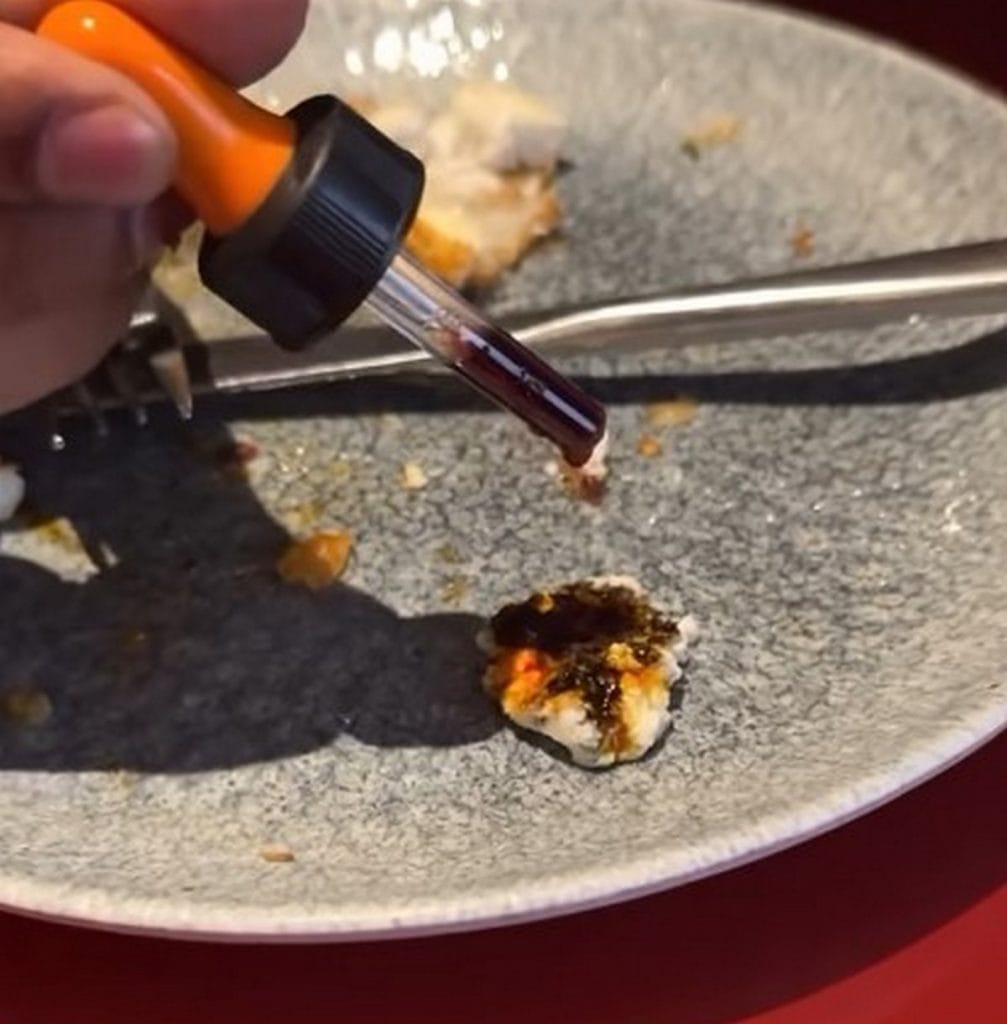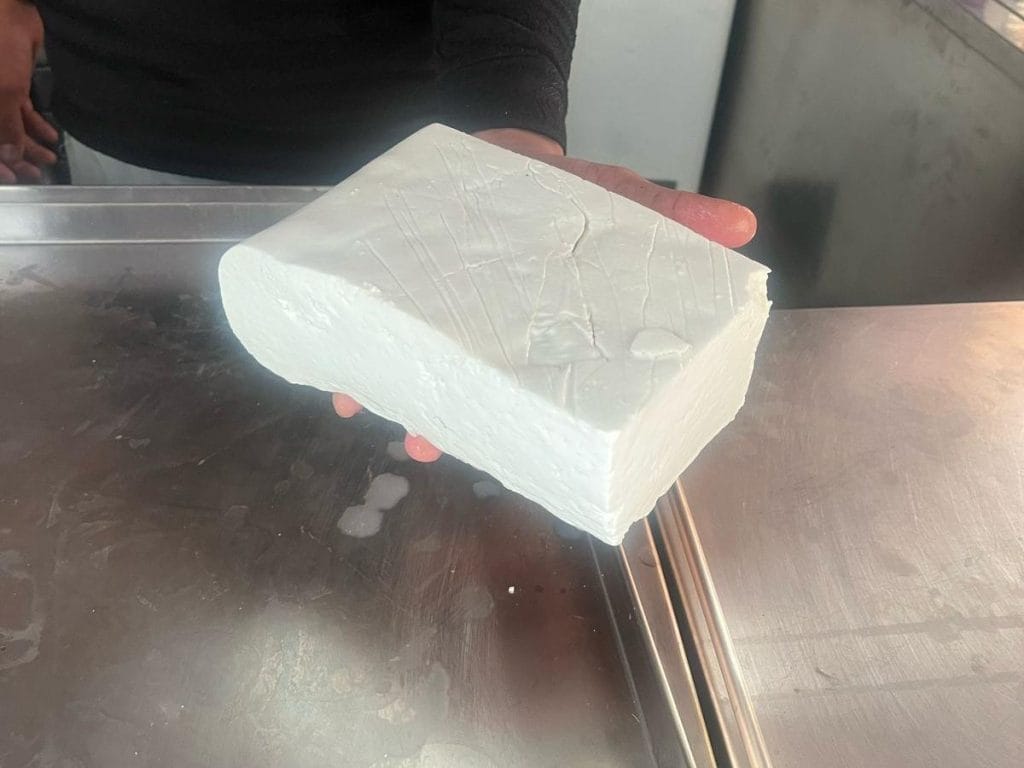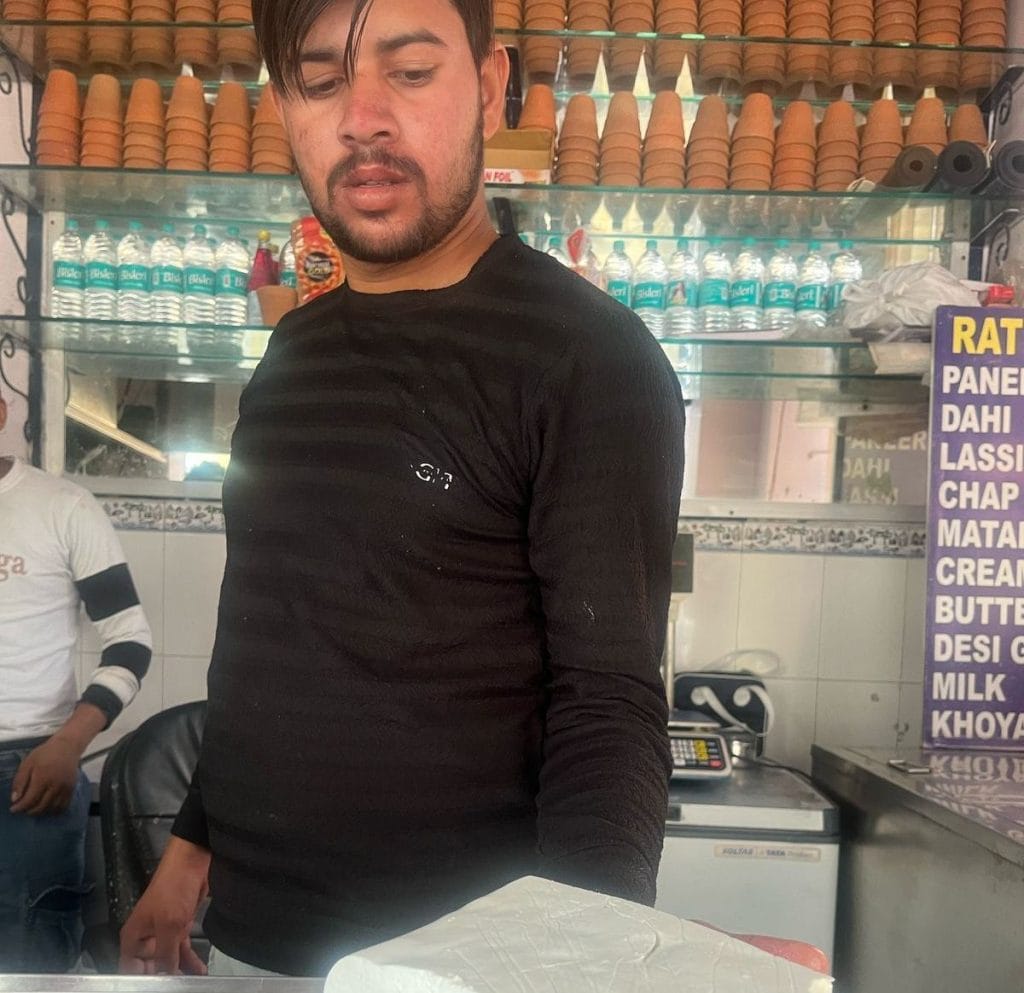New Delhi: The gravy was bubbling away, the veggies were chopped, and Chef Nishant Choubey was all set to make his signature Swiss Roll Paneer Lababdar at a popular restaurant. But as he sliced open the paneer, his instincts kicked in. A few seconds of poking and prodding, and he knew something was off.
“It wasn’t paneer,” he told ThePrint. “The texture was too thick and bouncy. Dairy paneer crumbles when you press it between your fingers—this one didn’t. That’s a giveaway that it’s not a dairy paneer.”
Since that incident about a year ago, Choubey has taken full control. He now makes his own paneer from scratch, right in the kitchen.
“I refuse to serve fake paneer. No analogue nonsense. My customers deserve the truth on their plate,” he said.
‘Fake’ paneer is now a hot topic in the food world. Carrying out paneer sting operations is a full-blown trend, with influencers using iodine drippers to test it in everything from Domino’s pizzas to McDonald’s burgers to makhani and kadhai dishes. If it turns black, there’s shock, horror, and viral views. The poisonous-looking result often just signals the presence of starch, sometimes from legitimate preparation methods, but that is usually lost in the din.
Beyond the alarmism, though, is a bigger debate about analogue paneer, a substitute that is legal to sell. Is it simply a clever imitation or a full-blown fake? Is it safe to eat, or can it lead to health issues? The dairy doppelgänger is cheesing off many consumers, and now it has nowhere to hide.
The controversy really blew up after a 19-year-old influencer, Sarthak Sachdeva, with over 5 lakh followers on Instagram, did the viral paneer check in several celebrity restaurants, including those of Virat Kohli, Shilpa Shetty, and Bobby Deol. But it was at Gauri Khan’s swanky Mumbai restaurant Torii that the drama peaked. As soon as the iodine was poured on the paneer, it turned black.
“Mere toh hosh ud gaye (My mind is blown)! This is fake paneer,” Sachdeva announced in his (now removed) video that got millions of views and widespread media coverage. Later, chef Vikas Khanna defended Torii, dismissing the adulteration accusations and pointing out the unscientific nature of the ‘test’.

Paneer pretenders, however, have been in the dock long before this. It started last October, when Zomato Hyperpure—Zomato’s B2B service—was accused of supplying “analogue paneer” made with vegetable fats to restaurants. Consumers called it “dystopian”, disgusting”, and “disappointing”. Though the product is technically labelled “analogue paneer” on their website, the National Restaurant Association of India (NRAI) and many chefs refuse to accept calling it ‘paneer’ at all.
Then in February, 170 students from SVKM’s Narsee Monjee Institute of Management Studies (NMIMS), Hyderabad, reported stomach pain and nausea, with at least 30 requiring hospitalisation after reportedly consuming adulterated or analogue paneer. A university statement later claimed that lab tests showed no contamination.
The analogue paneer panic is unfounded, according to Food Safety and Standards Authority of India (FSSAI) CEO Pawan Aggarwal. The problem is the name.
“It’s neither unsafe for health nor illegal to sell. Selling analogue paneer isn’t an issue, the nomenclature is,” he said.
Also Read: Coffee is an old trend. Delhi-NCR youth are obsessed with matcha now
The great paneer swap
It’s 7 am, and a black motorcycle pulls up in front of Noida’s Sector 46 market. Nalesh, who is busy chopping up vegetables at his momo stall, immediately pauses and walks over to the bike. It’s brought him his daily 2-3 kg supply of paneer.
“It’s fresh,” he said, although he has no scientific way to test its quality. The price is also good at only Rs 210 a kg, about half the cost of leading brands like Amul and Mother Dairy.
Nalesh doesn’t question it too much.
“Hume toh margin dekhna hota hai…mehenga paneer kaise khareed payenge hum” (I have to see the margins also, I cannot afford buying expensive paneer).
Like many small vendors, Nalesh relies on paneer that is readily and cheaply available. But there’s a cloud over quality.
A food sample test of 702 items in Noida and Greater Noida — conducted between April 2024 and March 2025 — revealed that paneer was the most adulterated product. Around 83 per cent of the paneer samples failed quality standards, and 40 per cent were deemed unsafe to eat.
Chef and F&B consultant Bakshish Dean pointed out that milk products have historically been the most adulterated products. Analogue paneer, however, doesn’t necessarily fall into the ‘adulterated’ category. It’s a different product altogether.

Quite like commercially manufactured vegetarian mayonnaise, it’s an imitation of the real thing.
In imitation paneer, milk fat is replaced by vegetable fat, and milk protein is swapped for protein from soya and lentils. To hold it together, stabilisers and emulsifiers are added.
“The processed block will be slightly firm, so starch is added to soften the texture,” Dean said.
Since real paneer is slightly acidic in nature, citric acid is added to mimic that quality, which also helps to improve shelf life. Artificial dairy flavour and white food colour round out the look and taste.
‘Analogue’ is an official category under FSSAI regulations, including products like mayonnaise, curd, butter, and even ice cream. However, the less-than-upfront marketing of such products has often upset consumers.
For instance, Kwality Walls, owned by Hindustan Unilever, originally marketed its products as “ice cream” even though they contained vegetable fats. It led to legal challenges and company was directed to use the term “frozen dessert” instead of “ice cream” in its advertisements.
Similarly, FSSAI mandates that analogue paneer must be clearly labelled as “non-dairy” to prevent consumer deception. The agency also requires these products to meet safety standards for ingredients like vegetable oils.
“Analogue paneer is safe to buy but if someone is selling analogue paneer but the label on the packets just reads ‘paneer’, legal action can be taken against them,” Pawan Aggarwal explained.
Dean argues that such products shouldn’t piggyback at all on the names of the foods they mimic.
“Just like mayo without eggs isn’t really mayo, paneer made without any dairy cannot be called one,” he added.

Yet, there’s strong demand for it from restaurants and other eateries, most of which do not use the term ‘analogue paneer’ on their menus.
“Analogue paneer’s biggest market is street food and cloud kitchens,” said Varun Khera, Noida Chapter Head of the National Restaurant Association of India (NRAI).
He added, however, that even if some restaurants are found selling it, it isn’t always their fault.
“Many times, the paneer vendors also source analogue paneer and sell it to restaurants,” he said. “It doesn’t get highlighted until an experienced chef notices or a customer complains.”
Also Read: How Korean cooks taught chopping to NCR. Nepali chefs are ruling the game
Craving protein, getting starch and fats
Paneer has seen a surge in demand lately, especially in North India. With fitness influencers promoting high-protein diets, paneer has gone from homely comfort food to muscle-building fuel, especially for vegetarians.
“Rising demand for protein has led to an increased demand for paneer. That’s why log sasta aur zyada bech rahe hai (people are now selling it cheaper and in large quantity),” said Dean.
But the two types of paneer are not built the same.
According to Delhi-based nutritionist Dr Sujeet Ranjan, analogue paneer is generally “not as rich in protein as traditional dairy paneer.”
While real paneer made from milk is high in protein—18–20g per 100g—and provides complete animal protein with all nine essential amino acids, analogue paneer typically contains 8–15g of protein per 100g, often derived from soy, pea, or other plant proteins. Other additives complicate the picture too.
“Plant-based proteins are not always complete unless carefully blended. Additionally, many lower-cost analogue paneers rely heavily on starch and fats rather than protein. They often contain unhealthy fats, making them nutritionally inferior to dairy paneer,” Ranjan said.
Consuming analogue paneer regularly could lead to digestive issues, inflammation, and other health issues, he warned.
“A long-term consumption of analogue paneer without proper dietary balance may lead to nutritional deficiencies, particularly in protein and calcium,” he said. “The primary health risk is its potential trans fat content, which is linked to serious conditions such as heart disease.”
Amid the protein rush, a few vendors are betting on the real thing to keep customers loyal.
Shahid, who has been running his family’s shop, Paneer Corner, in Lajpat Nagar for over 20 years, insists they prioritise quality over quantity.

“Thoda bechenge, par acha bechenge” (we’ll sell less, but we’ll sell quality), he said.
The third generation-owner operates a small paneer-making unit in his native village near Modinagar. They source fresh milk from local farmers and sell the final product for Rs 310 per kilogram—almost double the price of what vendors like Nalesh pay.
“I sell only what we produce in our factory. That’s how we’ve built our customers’ trust over the years,” Shahid said.
But not every buyer is constantly worried about quality and authenticity.
Lajpat Nagar resident Ramit Mittal buys his fresh paneer from Shahid but he’s not so picky when he’s out to enjoy street food, be it the paneer chilla of Kumar Pal Singh Yadav or Dolma Aunty momos.
“I know these street vendors or even the cloud kitchen owners don’t sell actual paneer. Expecting a plate of paneer momos for Rs 80 is funny,” said 42-year-old Mittal. “Street food can’t be made at home, so whether it’s analogue or anything else, as long as it tastes good, it’s fine.”
Mittal attests that his health has not been affected after years of eating paneer of uncertain provenance. He laughs at what he calls “oversensitive” young adults playing the part of food experts and scientists online.
“Tell them to study, make a career, it’s not all about going viral,” he said, biting into a paneer momo.
(Edited by Asavari Singh)






